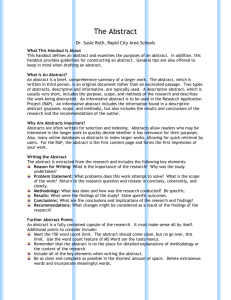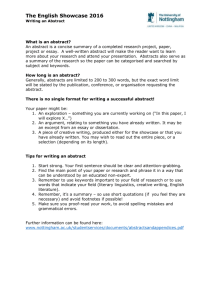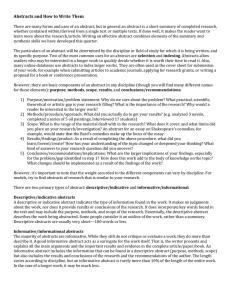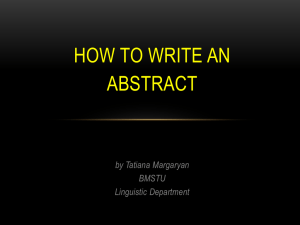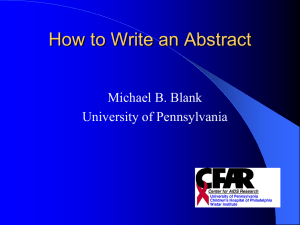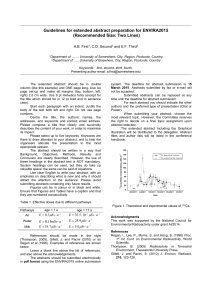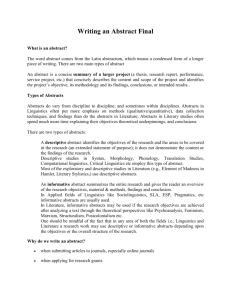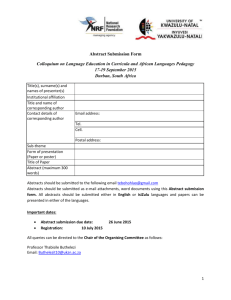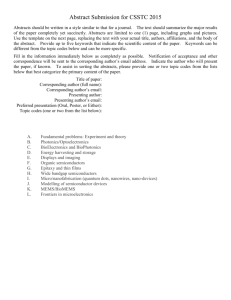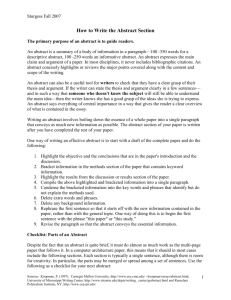How to Write an Abstract: A Guide
advertisement
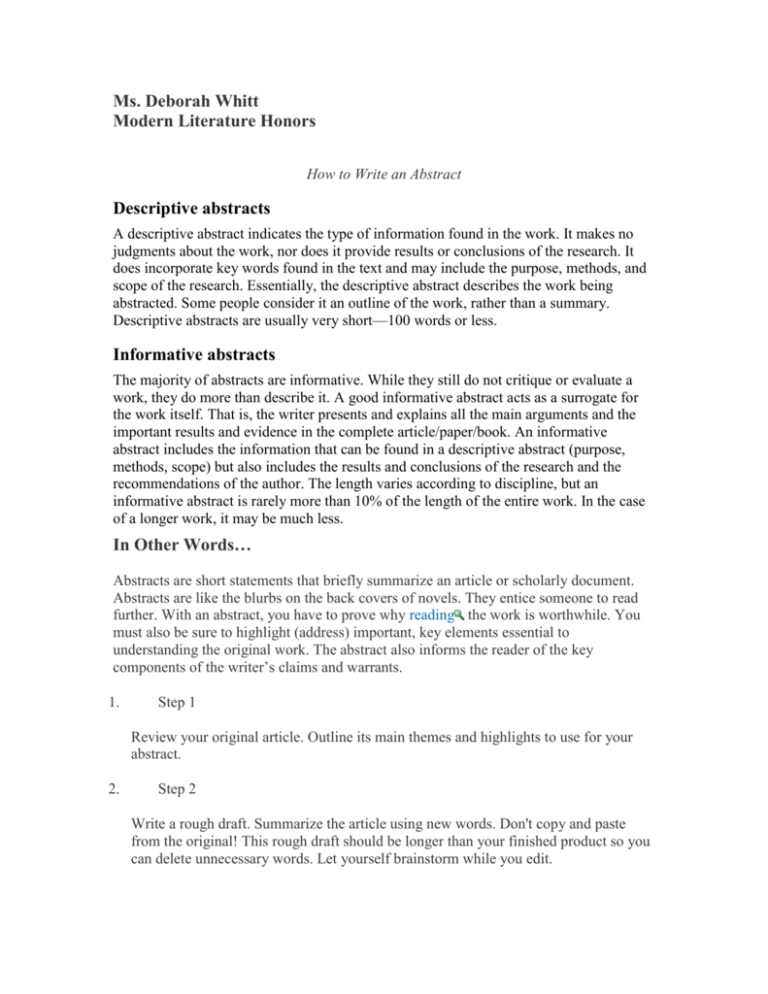
Ms. Deborah Whitt Modern Literature Honors How to Write an Abstract Descriptive abstracts A descriptive abstract indicates the type of information found in the work. It makes no judgments about the work, nor does it provide results or conclusions of the research. It does incorporate key words found in the text and may include the purpose, methods, and scope of the research. Essentially, the descriptive abstract describes the work being abstracted. Some people consider it an outline of the work, rather than a summary. Descriptive abstracts are usually very short—100 words or less. Informative abstracts The majority of abstracts are informative. While they still do not critique or evaluate a work, they do more than describe it. A good informative abstract acts as a surrogate for the work itself. That is, the writer presents and explains all the main arguments and the important results and evidence in the complete article/paper/book. An informative abstract includes the information that can be found in a descriptive abstract (purpose, methods, scope) but also includes the results and conclusions of the research and the recommendations of the author. The length varies according to discipline, but an informative abstract is rarely more than 10% of the length of the entire work. In the case of a longer work, it may be much less. In Other Words… Abstracts are short statements that briefly summarize an article or scholarly document. Abstracts are like the blurbs on the back covers of novels. They entice someone to read further. With an abstract, you have to prove why reading the work is worthwhile. You must also be sure to highlight (address) important, key elements essential to understanding the original work. The abstract also informs the reader of the key components of the writer’s claims and warrants. 1. Step 1 Review your original article. Outline its main themes and highlights to use for your abstract. 2. Step 2 Write a rough draft. Summarize the article using new words. Don't copy and paste from the original! This rough draft should be longer than your finished product so you can delete unnecessary words. Let yourself brainstorm while you edit. 3. Step 3 Re-read your original article and try to pinpoint any concepts you could use as keywords for an Internet search. Headings, titles or table of contents are usually good sources of keywords. 3. Step 4 Write an introductory sentence. This will be a statement of purpose for your article. It should introduce your central concept. 4. Step 5 Write the body. This will be a brief description of the subject matter, roughly one or two paragraphs. Embed keywords into the first 20 words of the body. Make them inconspicuous so they don’t break the reader’s concentration. 5. Step 6 Write a one or two sentence conclusion. This should entice someone to read more. 7. Step 7 Edit and revise your abstract as needed. It is best to let a day pass before you return to it with fresh eyes. Edit unnecessary words. Be sure you clearly present your main points. Tips & Warnings Embed keywords into the first 20 words of your abstract. This will make it visible to the major Internet search engines if you publish online. Emphasize the information, not the author, unless the author has noteworthy credentials. Never introduce new information in the abstract. Reveal what's in the article. Read it aloud to yourself or to a friend. Make sure it sounds natural and coherent. Keep it short--stick to one or two solid paragraphs. When abstracting something you have not written you do not have the luxury of cutting and pasting. Instead, it is up to you to define what a prospective reader would want to know about the work. There are a few techniques that will help you in this process: Identify key terms: Search through the entire document for key terms that identify the purpose, scope, and methods of the work. Pay close attention to the Introduction (or Purpose) and the Conclusion (or Discussion). These sections should contain all the main ideas and key terms in the paper. When writing the abstract be sure to incorporate the key terms. Highlight key phrases and sentences: Instead of cutting and pasting the actual words, try highlighting sentences or phrases that appear to be central to the work. Then, in a separate document, re-write the sentences and phrases in your own words. Don't look back: After reading the entire work, put it aside and write a paragraph about the work without referring to it. In the first draft you may not remember all the key terms or the results, but you will remember what the main point of the work was. Remember not to include any information you did not get from the work being abstracted. Revise, revise, revise…(need I say this again?) No matter what type of abstract you are writing, or whether you are abstracting your own work or someone else's, the most important step in writing an abstract is to revise early and often. When revising, delete all extraneous words and incorporate meaningful and powerful words. The idea is to be as clear and complete as possible in the shortest amount of space. The Word Count feature of MS Word can help you keep track of how long your abstract is and help you hit your target length. All abstracts include: 1. 2. 3. 4. 5. The full citation of the source preceding the abstract. The most important information first. The same level of language found in the original, including technical language. Key words and phrases that quickly identify the content and focus of the work. Clear, concise, and powerful language. Abstracts may include: 1. The thesis of the work in the first sentence. 2. The background that places the work in the larger body of literature. 3. The same chronological structure of the original work. How not to write an abstract: 1. Do not refer extensively to other works. 2. Do not add information not contained in the original work. 3. Do not define terms.
